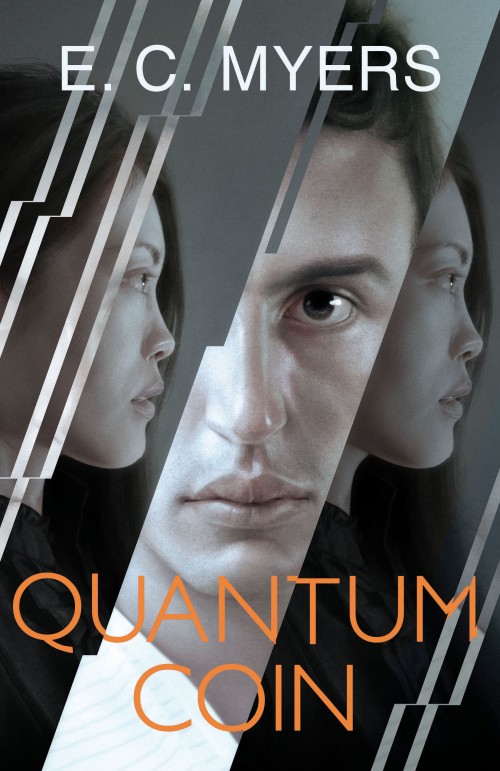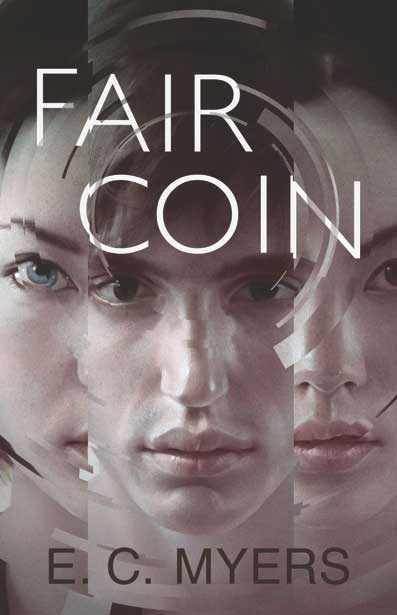Imagine learning that you were dead, that someone wearing your clothes, carrying your possessions, bearing your features, had been struck by a bus and killed.
Imagine your mother, already fragile from alcoholism and depression, having to identify your corpse, and trying to kill herself out of grief.
Now imagine that you’ve found a coin which can change your life with every flip. Imagine having the power to make things better or worse, but never knowing what the change will be until it’s too late.
Imagine, then, that with every wish granted by the coin, you end up in a different world, where people act in unfamiliar ways. Where the girl of your dreams is your girlfriend, where your best friend goes from geek to jock, where your mother is perfectly fine but doesn’t understand why you’re weirded out.
Ephraim Scott has just experienced all of those things, and now he’s worried that he may never return to the world he called home….
Mind you, there’s more to the story. As Ephraim soon discovers, the coin isn’t magical, it’s part of a system designed to allow select people to travel between parallel worlds. He’s not changing the world he’s in, he’s swapping with his alternate selves almost at random, leaving a string of confused, out-of-place Ephraims behind him in an ever-widening wake. It gets worse when he meets a murderous version of his best friend, Nathan, a gun-toting thug who uses the power for selfish, even sociopath reasons. And then he meets an older version of Nathan from a timeline where things have run just a little quicker, and all is explained.
As Ephraim learns more about the timeline which developed the so-called Charon device, about the older Ephraim and Nathan who originally used it to travel between worlds, how the system was lost and abused, how his alternate self was murdered, how he’s become lost in a changing sea of possibilities only to be stalked by a nightmarish version of someone he once trusted, he knows that the only proper thing to do is stop the evil Nate, and to find a way to return home once and for all.
 Of course, things are never that easy. Because even after he returns home, vowing to never use the coin or travel between worlds again, even after he accepts his own life for better and for worse, unfinished business still manages to follow him.
Of course, things are never that easy. Because even after he returns home, vowing to never use the coin or travel between worlds again, even after he accepts his own life for better and for worse, unfinished business still manages to follow him.
In this case, it’s Zoe Kim, the alternate version of Ephraim’s girlfriend, Jena. He once had a shot with Zoe, but he gave her up because they were literally worlds apart. So what’s Ephraim to do when he has two versions of the same girl, alike and different, staring him down?
Well, this certainly isn’t some Betty and Veronica style hijinks. The multiverse is collapsing, all the numerous parallel worlds collapsing and merging into one, and it’s Epharaim’s falult. Sort of. It seems that reality can only handle so many alternate worlds before things go wonky, and Ephraim’s uncontrolled, unpredictable travels spawned a host of superfluous timelines.
In short: it’s the end of the world as they know it, and no one’s fine.
Their only hope is to track down the man who originally invented the Charon device. The bad news: he’s dead.
The good news: they might be able to travel to an alternate timeline and recruit a new version of him.
Let’s just say that things don’t go as planned….
Fair Coin and Quantum Coin are two halves to a whole, a complex, complicated, intelligent, thought-provoking story that challenges expectations and plays around with science in all sorts of weird ways. As complicated as the plot is to describe, the actual mechanics are even more twisty and turny. After all, this is a story where, at any given time, there are upwards of three of four analogs of any given character wandering around. The cast is small enough to be almost claustrophobic: there’s Ephraim, Nathan, Jena Kim, Hugh Everett, and a few incidental secondary characters. But for each of the main characters, there’s at least three variants…occasionally in the same room at the same time. Claustrophobic becomes crowded.
Yeah, it’s like that. E.C. Myers pulls the rug out from under his readers numerous times through the series. It starts off with a magical bent, literal wish fulfillment that seems to change the world unpredictably. Then it moves into a more science fiction oriented plot as we learn the truth about the Charon device. What seems to be a story about getting the girl of your dreams soon becomes a terrifying psychological thriller where our heroes are hunted by a killer wearing a familiar face. And then it becomes an epic story about saving the universe from total annihilation. There are elements of time travel (our heroes end up in a world twenty years ahead of our own, as well as in an iteration of 1954) and multi-world theory and quantum mechanics and so on.
It’s hard to talk about these books without spoiling things even further. After all, there are a lot of surprises, not all of them pretty. Surprising deaths and unexpected revelations, impossible choices and unlikely romances, sudden yet inevitable betrayals and mistaken identities.
Imagine that every timeline ever to exist was collapsing, and you had to decide what was worth saving, and what would be condemned to oblivion. Could you do the right thing? Or would you do the selfish thing? Could you even determine which was which? Now what if you were face to face with yourself and still had to choose, and their choice is just as valid. Who stays? Who goes?
Myers doesn’t take the easy road, either. Readers may not agree with the decisions his characters make, but in the end, it’s hard to say who’s right and wrong.
And that’s why I love these books. Because I’m a sucker for time travel and parallel worlds, and Myers brings a fresh new take to some old tropes. In many ways. I’m reminded of the classic DC Comics storyline, Crisis on Infinite Earths, which dealt with many of the same issues. (What does one do with multiple Supermen, extra Flashes, spare Green Lanterns, and surplus Wonder Women, when five worlds are smooshed into one? Don’t answer, I know what happens.)
Plus, the interplay between Jena and Zoe—two very different versions of the same girl—is priceless. While it may be fun to see Old Nate and Young Nate interact, or morbidly fascinating to watch D-Bag Ephraim get the drop on Regular Protagonist Ephram, Zoe and Jena have the best scenes together. Especially when they first meet, at the prom, and explanations are in order.
Bottom line: for unpredictable, intelligent, challenging YA science fiction, this series is a sure fire bet. I can’t wait to see what Myers has up his sleeve for the future.
Assuming, of course, that the E.C. Myers we know isn’t replaced by an alternate….
Nebula-nominated Fair Coin and Quantum Coin are published by Prometheus Books.
Michael M. Jones is a writer, editor, and book reviewer. He lives in Roanoke, VA, with a pride of cats, way too many books, and a wife who occasionally steals whatever he’s reading. For more information, visit him and an ever-growing archive of reviews at Schrodinger’s Bookshelf. He is the editor of the recently-released Scheherazade’s Facade anthology.










